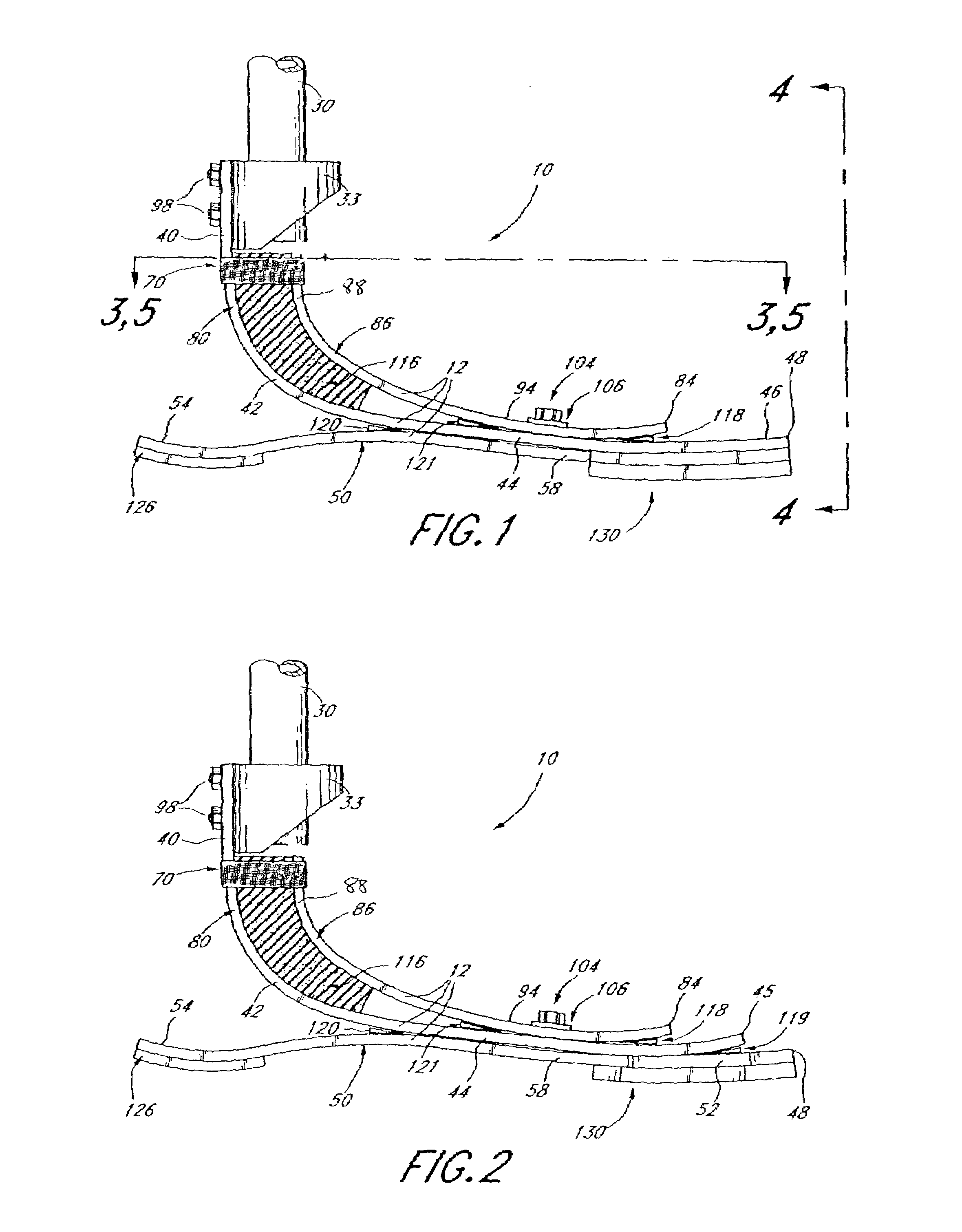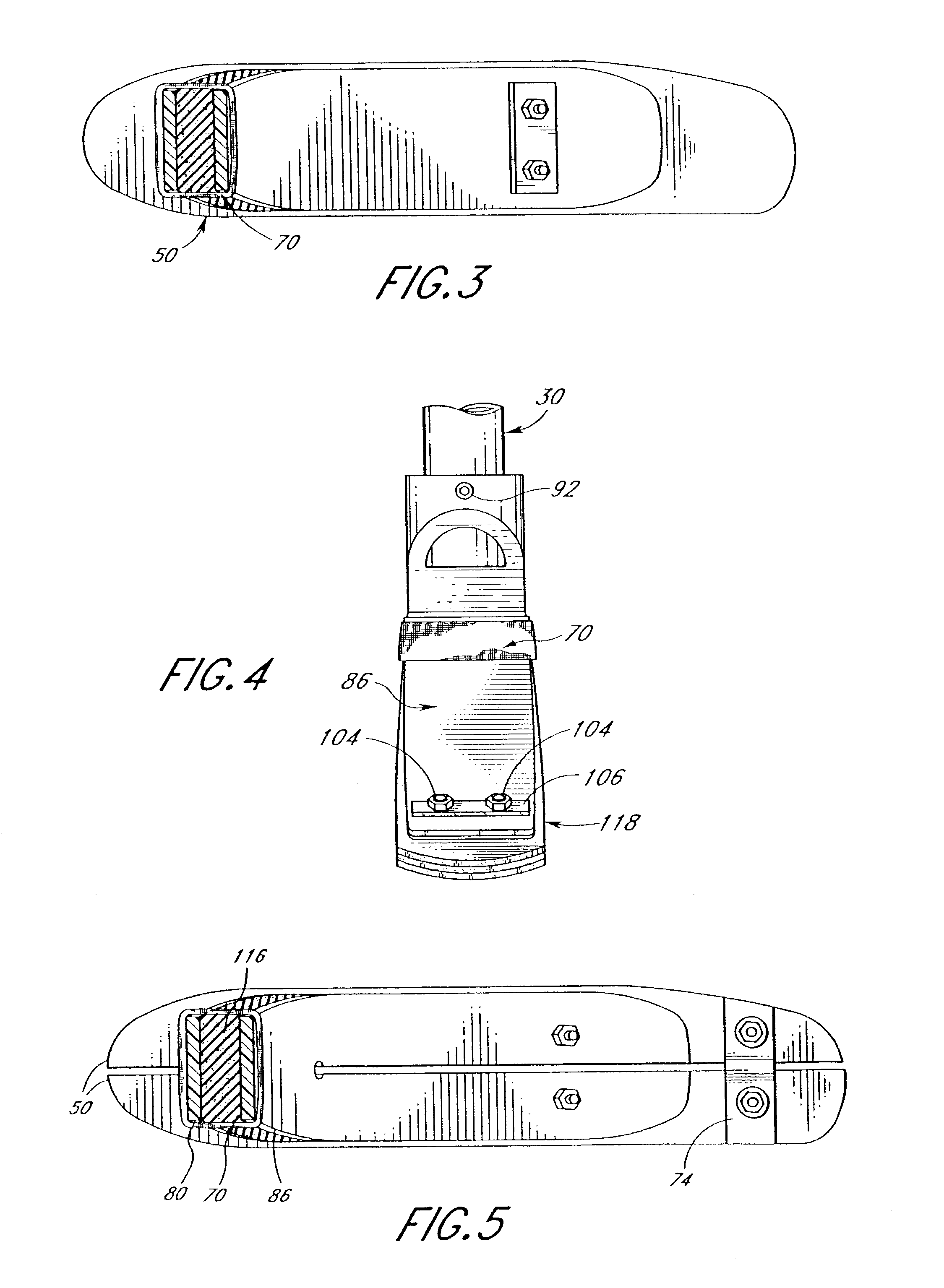Energy storing foot prosthesis with improved plantar flexion
a technology of plantar flexion and foot prosthesis, which is applied in the field of foot prosthesis, can solve the problems of requiring significant time, effort and money, and prior art devices more nearly achieving the desired ease of adjustment, and achieve the effect of easy adjustmen
- Summary
- Abstract
- Description
- Claims
- Application Information
AI Technical Summary
Benefits of technology
Problems solved by technology
Method used
Image
Examples
Embodiment Construction
[0027]Referring to the drawings, and particularly to FIG. 1, I show one preferred embodiment of a foot prosthesis 10 constructed in accordance with the teachings of the invention. The foot 10 generally includes a forefoot member 80, a sole member 50, and an auxiliary support member 86 operatively and demountably attached to each other at the arch section 44. Attachment is preferably accomplished using suitable nut and bolt combinations 104 associated with a load-transmitting metallic plate 106. The auxiliary member is preferably attached to the forefoot member such that the auxiliary member may add to the stiffness of the ankle portion of the forefoot member. If desired, a retaining band 70 may be provided at the ankle section 42. A compressible member 116 may be provided between the auxiliary member, and the forefoot member. Function blocks 118, 120, 121, and 119 (FIG. 2) may also be provided in order to vary the length of the effective lever arms of the various members. If indicat...
PUM
 Login to View More
Login to View More Abstract
Description
Claims
Application Information
 Login to View More
Login to View More - R&D
- Intellectual Property
- Life Sciences
- Materials
- Tech Scout
- Unparalleled Data Quality
- Higher Quality Content
- 60% Fewer Hallucinations
Browse by: Latest US Patents, China's latest patents, Technical Efficacy Thesaurus, Application Domain, Technology Topic, Popular Technical Reports.
© 2025 PatSnap. All rights reserved.Legal|Privacy policy|Modern Slavery Act Transparency Statement|Sitemap|About US| Contact US: help@patsnap.com



